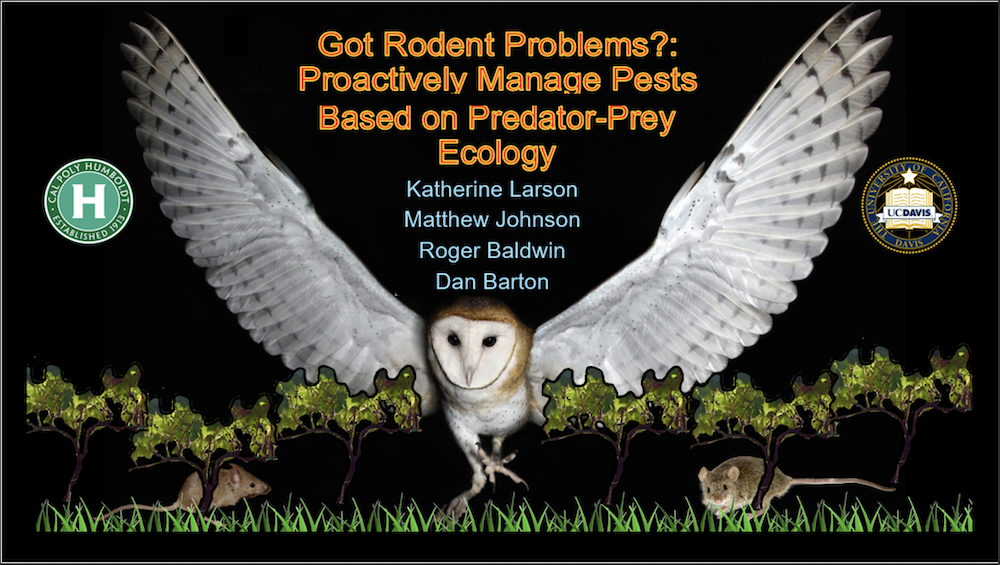
Katherine Larson is a wildlife biologist with the Redding Bureau of Land Management (BLM), where she helps to make informed land management decisions that benefit birds. She hopes to grow in this position by coordinating with avian biologists along birds’ entire flyways and life cycles, and by incorporating citizen science and outdoor education on BLM land. Prior to this position, Katherine studied wildlife biology at Humboldt State University after transferring from University of Colorado where she played NCAA softball, rock climbed and was a white-water raft guide. When not thinking about birds, Katherine can be found backpacking in the Trinity Alps, cooking and baking, or hanging out with Buddhist monks.
Research Abstract:
Ecological theory predicts that raptors exert top-down effects on their prey by direct consumption, indirectly by imposing risk of predation, or a combination of both. However, empirical evidence for these effects is mixed and inconsistent. Understanding relationships between raptors and their prey is especially important where raptors may contribute to the control of agricultural pests. Earlier work shows promise that barn owls may control rodent pests, but empirical evidence is limited and the distinction between direct and indirect effects remains unresolved. Here, we investigate the top-down effects of barn owls on rodent pests in winegrape vineyards in Napa Valley, California. We monitored barn owl occupancy, reproductive status, and fledgling success in over 300 nest boxes in 2023. We used this to create a spatially and temporally explicit barn owl hunting pressure model from hunting locations and from prey delivery rates that vary as nestlings develop. The hunting pressure layers were used to examine the direct effect of barn owls on rodent abundance (measured with chew blocks), and the indirect effect of barn owls on rodent perceived predation risk and activity (measured with giving-up density trays and game cameras respectively). We found that barn owls exert both direct and indirect effects on rodent pests and that dense vegetation favors the acoustically attuned barn owls over the visually-oriented rodent pests. We contribute to growing evidence that barn owls can be used as biological control in agricultural systems, and we show that growers can manipulate vegetation to enhance the effect of barn owls and to induce more fear in rodents.
Shasta Birding Society is inviting you to a scheduled Zoom meeting.
Topic: Proactively Manage Pests Based On Predator-Prey Ecology
Time: Nov 13, 2024 07:00 PM Pacific Time (US and Canada)
Join Zoom Meeting
https://us06web.zoom.us/j/
Meeting ID: 880 0433 8851
—
One tap mobile
+12532158782,,88004338851# US (Tacoma)
+12532050468,,88004338851# US
—
Dial by your location
• +1 253 215 8782 US (Tacoma)
• +1 253 205 0468 US
• +1 669 444 9171 US
• +1 669 900 6833 US (San Jose)
• +1 719 359 4580 US
• +1 346 248 7799 US (Houston)
• +1 301 715 8592 US (Washington DC)
• +1 305 224 1968 US
• +1 309 205 3325 US
• +1 312 626 6799 US (Chicago)
• +1 360 209 5623 US
• +1 386 347 5053 US
• +1 507 473 4847 US
• +1 564 217 2000 US
• +1 646 931 3860 US
• +1 689 278 1000 US
• +1 929 205 6099 US (New York)
Meeting ID: 880 0433 8851
Find your local number: https://us06web.zoom.us/u/
